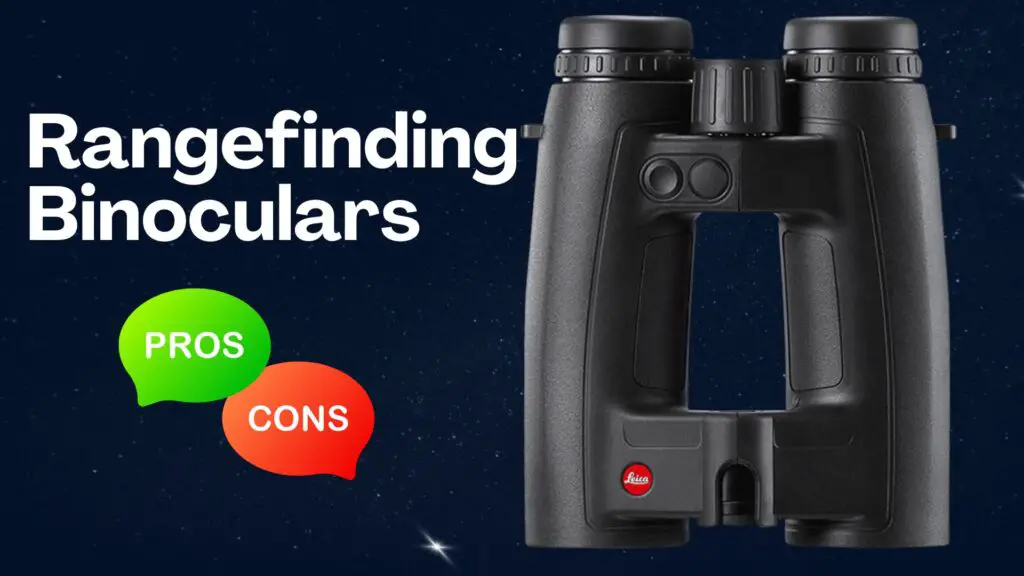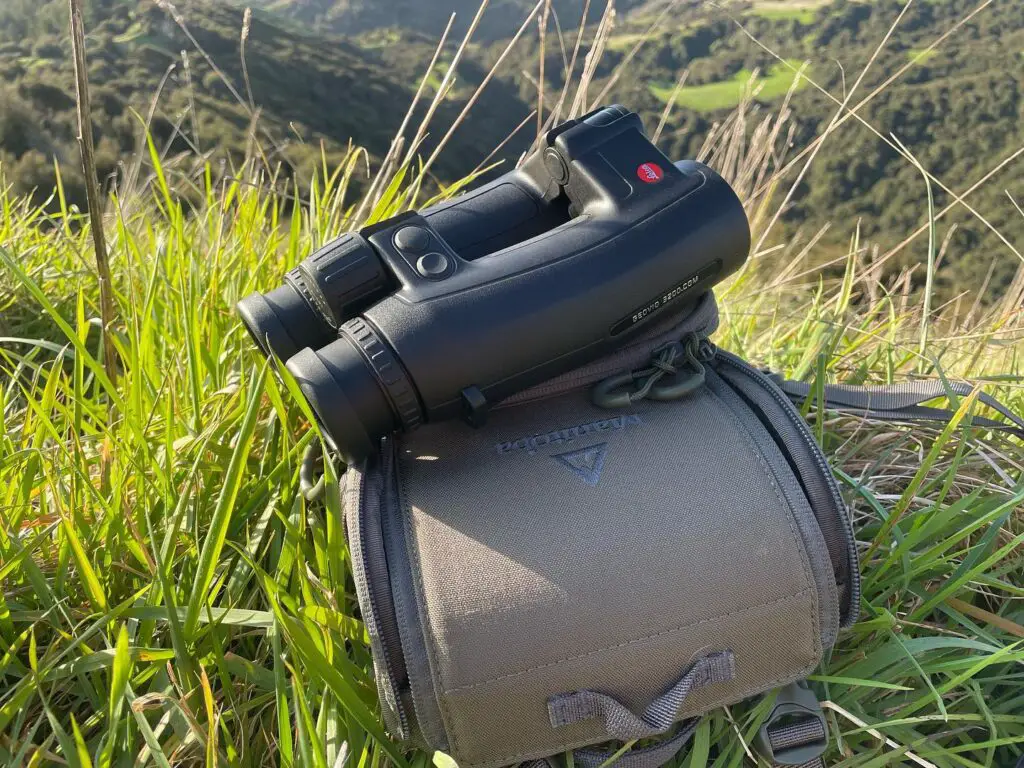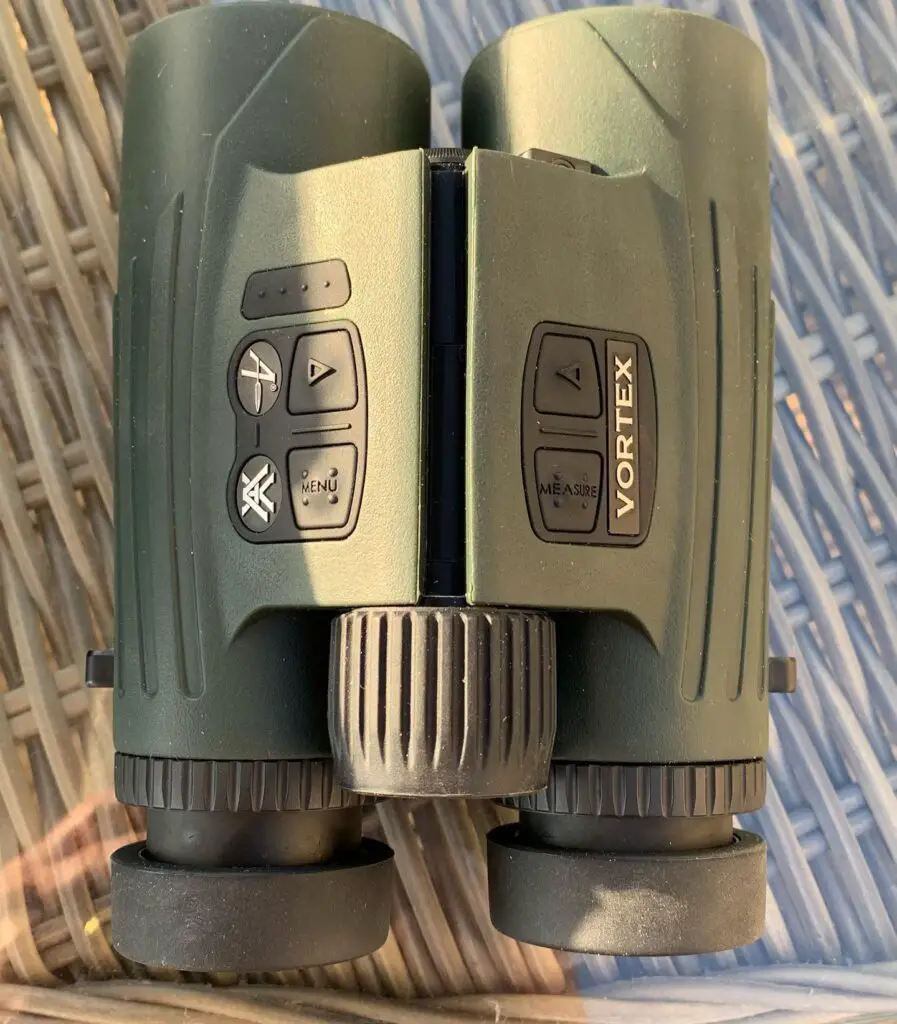Rangefinding Binoculars: My Take on Their Pros, Cons, and Real-World Use

I’ve always been a gear nerd, especially when it comes to tools that make my time outdoors more effective.
The first time I picked up a pair of rangefinding binoculars in 2021, I was blown away by the idea of combining crystal-clear optics with instant distance measurements.
No more fumbling between binoculars and a rangefinder—just one tool to do it all. But after spending weeks testing models in the field, and talking to other hunters, I’ve learned these gadgets aren’t perfect.
They’re powerful, but they come with trade-offs.
Here’s my deep dive into what makes rangefinding binoculars awesome, where they fall short, and whether they’re worth your hard-earned cash.
What Are Rangefinding Binoculars?
At their core, rangefinding binoculars are a two-in-one deal: they’re high-quality binoculars with a built-in laser rangefinder.
You can use them to spot distant objects—like a deer on a ridge or a golf pin—and instantly measure how far away they are.
They’re a favorite among hunters, especially those who need quick, accurate distance readings to make ethical shots. But they’re also handy for golfers, birdwatchers, and hikers who want to know exact distances without carrying extra gear.
Models like the Swarovski EL Range and Zeiss Victory RF are known for their sharp optics and reliable ranging, often reaching out to 2000 yards or more.
Why I’m Impressed: The Pros
After testing these in the field and comparing notes with other users, here’s why I think rangefinding binoculars can be a game-changer.
1. Seamless Convenience
The biggest selling point is how they streamline your setup. Instead of carrying separate binoculars and a rangefinder, you’ve got one device that does both.
This is a lifesaver when seconds matter.
Picture this: I was on a hunt last fall, glassing a hillside when a mule deer buck stepped out 400 yards away. With my rangefinding binoculars, I could size him up, confirm he was a shooter, and get an exact distance reading without taking my eyes off him. No digging in my pack, no extra movement—just one smooth motion. That kind of efficiency can make or break a hunt.
This isn’t just for hunters. I lent my pair to a buddy who golfs, and he loved how he could measure distances to the pin or hazards without switching tools. It’s like having a personal caddy in your binoculars.
2. Pinpoint Accuracy, Fast
Rangefinding binoculars let you range your target without losing sight of it, which is huge in dynamic situations.
Whether you’re perched on a tripod or moving through thick brush, you can get a distance reading in seconds.
During that same hunt, I ranged the buck and a nearby tree to plan my stalk, all while keeping him in view. This speed is critical when game is on the move.
Top models like the Leica Geovid 3200 can range up to 3200 yards, which is overkill for most scenarios but perfect for long-range rifle hunters.
Many also include ballistic calculators that adjust for factors like angle, wind, and temperature, giving you a true shooting solution.
I’ve found these features especially helpful in tricky conditions, like shooting across a steep canyon.

3. Versatility Across Activities
These binoculars aren’t just for hunting. You can use them to measure distances to landmarks, plan routes, or even track moving targets.
For bowhunters, they’re great for close-range shots (some models range as low as 15 yards), while rifle hunters can rely on their long-distance capabilities.
I’ve used mine while hiking to gauge distances to mountain peaks, which helped me estimate how long it’d take to reach a summit.
Golfers can measure to the green, and birdwatchers can log exact distances to rare sightings. It’s like having a multi-tool for your eyes.
4. High-Tech Goodies
Modern rangefinding binoculars come loaded with features that feel like they’re from the future. Many, like the Leica Geovid 3200, offer Bluetooth connectivity to sync with smartphone apps for customized ballistic data.
You can input your rifle and ammo specs to get precise shooting solutions. Some models even adjust for environmental factors like temperature and barometric pressure in real time.
I tested this on a windy day, and the app integration helped me nail a shot I might’ve missed otherwise. It’s like having a ballistic computer in your binoculars.
5. Potential Cost Savings
This one surprised me. While rangefinding binoculars aren’t cheap, they can save you money compared to buying separate high-end binoculars and a rangefinder.
A top-tier binocular might run you $2,700, and a premium rangefinder could add another $3,000. A quality rangefinding binocular, like the Vortex Fury 5000, might set you back $1,500-$2,000 for both functions.
If you’re starting from scratch, this could be a smarter investment.
| Pros | Description |
|---|---|
| Seamless Convenience | Combines binoculars and rangefinder, reducing gear and movement. |
| Pinpoint Accuracy | Ranges targets without losing sight, with ballistic adjustments. |
| Versatility | Useful for hunting, golfing, hiking, and birdwatching. |
| High-Tech Features | Includes Bluetooth, ballistic apps, and environmental adjustments. |
| Cost Savings | Potentially cheaper than separate premium binoculars and rangefinder. |
The Downsides: Where They Fall Short
As much as I love these binoculars, they’re not perfect. Here’s what I’ve found after putting them through their paces.
1. Heavy and Bulky
Rangefinding binoculars are noticeably heavier than standard binoculars because of the added electronics.
This can be a pain on long treks. During a multi-day backcountry hunt, I felt the extra weight in my pack compared to my lightweight binoculars.
By day three, my shoulders were begging for a break. If you’re a minimalist or hike long distances, this could be a dealbreaker.
2. Wallet-Draining Price
Let’s not sugarcoat it—these things are expensive. High-end models like the Swarovski EL Range or Zeiss Victory RF can cost over $3,000. Even mid-range options, like the Sig Sauer KILO10K, start around $1,200.
If you already have a solid pair of binoculars and a rangefinder, the upgrade might not make sense unless you’re desperate to simplify your kit.
I’ve tested cheaper models, but they often skimp on glass quality or reliability, which can be more frustrating than helpful.
3. Reliability Risks
The electronics in rangefinding binoculars are a double-edged sword. If the laser or other components fail, you’re left with an expensive pair of binoculars that can’t range.
I’ve heard horror stories from hunters whose units crapped out mid-hunt, leaving them high and dry. The electronics warranty is often only one year, compared to longer warranties on the optics.
This makes me a bit nervous about relying on them in remote areas. With separate devices, if your rangefinder dies, you still have functional binoculars.
4. Takes Time to Master
Using these binoculars effectively isn’t as simple as point and shoot. Holding them steady while ranging, especially with one hand while managing a bow or rifle, takes practice.
When I first tried them, I struggled to get consistent readings at longer distances because my hands weren’t steady enough.
It took a few range sessions to get the hang of it. For bowhunters, ranging while holding a bow can feel awkward, and I’ve seen new users get frustrated trying to juggle both.
5. Optics Might Not Be Top-Tier
While high-end rangefinding binoculars have great glass, they sometimes don’t match the clarity of non-rangefinding models from the same brand.
For example, some users say the Vortex Fury 5000’s optics are more like mid-tier binoculars than premium ones.
If you’re a stickler for crystal-clear images, you might notice a slight difference. That said, the optics are still impressive for most uses, especially in good light.
| Cons | Description |
|---|---|
| Heavy and Bulky | Heavier than standard binoculars, tiring on long trips. |
| Wallet-Draining Price | High-end models cost over $3,000; mid-range options compromise quality. |
| Reliability Risks | Electronics can fail, leaving you with non-ranging binoculars. |
| Takes Time to Master | Requires practice to range steadily, especially one-handed. |
| Optics Not Top-Tier | May not match clarity of non-rangefinding binoculars. |

Are They Worth It?
So, are rangefinding binoculars worth the investment? It depends on how you plan to use them.
If you’re a hunter who values speed and simplicity, can handle the weight, and has the budget for a quality model, they’re a no-brainer.
They’ve made my hunts more efficient, especially when I need to make quick decisions. For example, on a recent elk hunt, I used my binoculars to range a bull at 600 yards and a nearby ridge at 550, which helped me plan my stalk perfectly.
But if you’re on a tight budget, already have reliable gear, or prefer lightweight equipment, you might be better off sticking with separate binoculars and a rangefinder.
For some activities, like archery in thick cover, a traditional rangefinder might still be more practical. I’ve talked to hunters who swear by their separate setups because they’re lighter and more reliable in the long run.
For me, the pros outweigh the cons. The convenience of having everything in one device has saved me time and hassle in the field. But I get why some folks might hesitate—it’s a big investment, and the extra weight isn’t for everyone.
Choosing the Right Pair
If you’re sold on rangefinding binoculars, here’s how to pick the right one:
- Optical Quality: Go for brands like Swarovski, Zeiss, or Leica for top-notch glass that delivers clear, bright images.
- Ranging Capability: Most hunters need 1000-1500 yards, but long-range shooters might want 2000+ yards, like the Leica Geovid 3200.
- Features: Decide if you need extras like ballistic calculators or Bluetooth. Waterproofing is a must for rugged conditions.
- Weight and Size: Lighter models are better for long hikes, but they might sacrifice features or glass quality.
- Budget: Set a realistic budget. Mid-range options like the Vortex Fury 5000 offer great value, while premium models are pricier but top-tier.
Here’s a quick comparison of popular models:
| Model | Max Range (yards) | Magnification | Weight (oz) | Price Range |
|---|---|---|---|---|
| Leica Geovid 3200 | 3200 | 10x | 38.8 | $3,000 – $4,000 |
| Swarovski EL Range | 1800 | 10x | 35.3 | $2,500 – $3,500 |
| Zeiss Victory RF | 2000 | 10x | 37.4 | $2,800 – $3,800 |
| Vortex Fury 5000 | 2500 | 10x | 36.7 | $1,500 – $2,000 |
| Sig Sauer KILO10K | 2500 | 10x | 34.6 | $1,200 – $1,500 |
Note: Prices are approximate and may vary.
Final Thoughts
Rangefinding binoculars are a powerful tool that can transform how you approach hunting, golfing, or other outdoor activities.
They’re not perfect—the weight, cost, and potential reliability issues are real concerns—but their convenience and advanced features make them hard to beat for the right user.
I’ve found them invaluable for quick, accurate ranging in the field, but I also understand why some stick with separate devices.
If you’re thinking about getting a pair, do your homework. Read reviews, test models if you can, and think about how you’ll use them.
Start with a mid-range option like the Vortex Fury 5000 or Nikon Laserforce to see if they fit your style before splurging on a premium model.
Also See:
